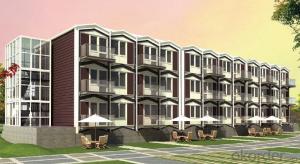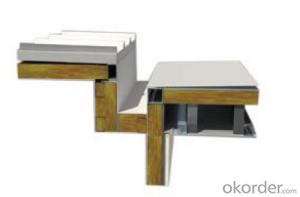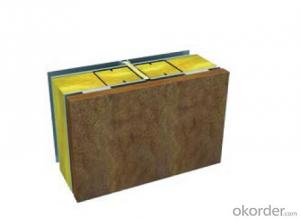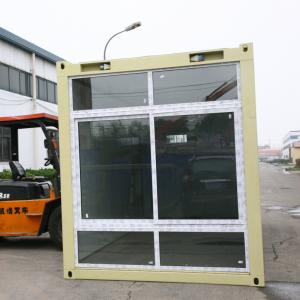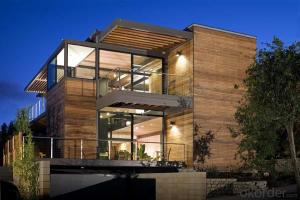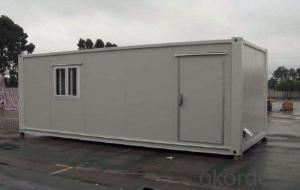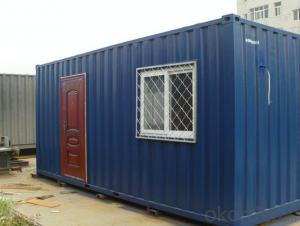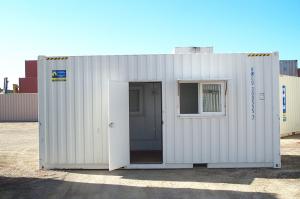Villa House Prefabricated Home Standard High Quality Prefab Home
- Loading Port:
- Shanghai
- Payment Terms:
- TT OR LC
- Min Order Qty:
- 50 m²
- Supply Capability:
- 10000 m²/month
OKorder Service Pledge
OKorder Financial Service
You Might Also Like
Villa House Prefabricated Home Standard High Quality Prefab Home
Why Choose Light Gauge Steel Structure?
1)Lifetime for structure: 100 years.[0.75~1.2mm , Z275galvanized steel profile, strength:550Mpa ]
2)Earthquake resistance: mix more than 8 grades.
3)Wind resistance:max 60m/s.
4)Fire resistance:all the materials used can be fire resistance.
5)Snow resistance:max 2.9KN/m²as required
6)Heat insulation:100 mm in thickness can match 1 m thickness of brick wall.
7)High acoustic insulation:60db of exterior wall 40db of interior wall
8)Insect prevention: Free from the damages by insects, such as white ants
9)Ventilation:a combination of natural ventilation or air supply keep the indoor air fresh and clean
10)Packing and delivery: 140SQM/ 40'HQ container for structure only and 90SQM/ 40'HQ container for structure with decorate materials.
11)Installation:the average is one worker one day install one SQM.
12)Installation guide:dispatch engineer to guide on site.
Design code:
(1)AISI S100 North American Specification for the Design of Cold Formed Steel Structural Members published by the American Iron and Steel Institute (AISI) in the United States.
(2)AS/NZS 4600 Australian/New Zealand Standard-Cold-formed steel structures jointly published by Standards Australia and Standards New Zealand.
(3)BS 5950-5 Structural use of steelwork in building-Part 5. Code of practice for design of cold formed thin gauge sections published by BSI in the UK.
(4)ENV1993-1-3 means Eurocode 3: Design of steel structures; Part 1.3: General rules, Supplementary rules for cold-formed thin gauge members.
Specifications
Flat roof prefab house construction
Low cost, durable structure, convenient relocation, esty to assemble and disassemble
Description
Structure is reliable: Light steel structure system is safe and reliable, satisfied modern architecture concept.
Easy assembly and disassembly: The house can be assembled and disassembled many times, used repeatedly.
It just need simple tools to assemble. Each worker can assemble 20~30 square meters every day. 6 worker can finish 300sqm prefab house in 2 days.
Beautiful decoration: The prefab house is beautiful and grace, have bright and bland colour, flat and neat board, with good decoration effect.
Flexible layout: Door and window can be assembled in any position, partition wall panel can be assemble in any transverse axes sites. Stair is assembled in outside.
Using life: All the light steel structures have antisepsis-spraying treatment. The normal using age are above 15 years.
Environmental protection and economy: Prefab house design is reasonable, easy to assemble and disassemble, used circularly, low wastage, without building rubbish. Average using cost is less than other kinds of building annually.
Features
1) Environmental Benefits
2) Benefits in Construction
Efficient use of architectural area - 8-10% improved
space usage
Anti-earth quake - soft and light structure reduce the
influence of earthquake
Anti-wind - strong structure
Light self-weight - lighter than 1/4 - 1/6 of traditional
reinforced concrete structure
Builds up to 4-6 floors
Extended choice of external decorative finishes
FAQ
1. Q: How much is this house?
A: Please provide with your house drawing and project location, because different design, different location effect the house materials quantity and steel structure program.
2. Q: Do you do the turnkey project?
A: Sorry, we suggest customer to deal with the foundation and installation works by self, because local conditions and project details are well knowb by customers, not us. We can send the engineer to help.
3. Q: How long will your house stay for use?
A: Our light steel prefab house can be used for about 70 years.
4. Q: How long is the erection time of one house?
A: for example one set of 200sqm house, 8 workers will install it within 45 days.
5. Q: Can you do the electricity,plumbing and heater?
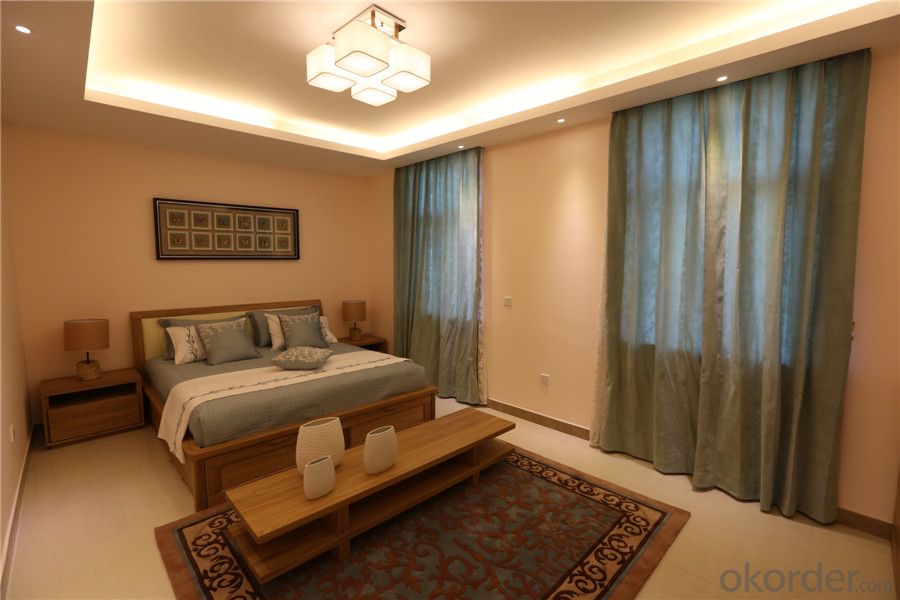
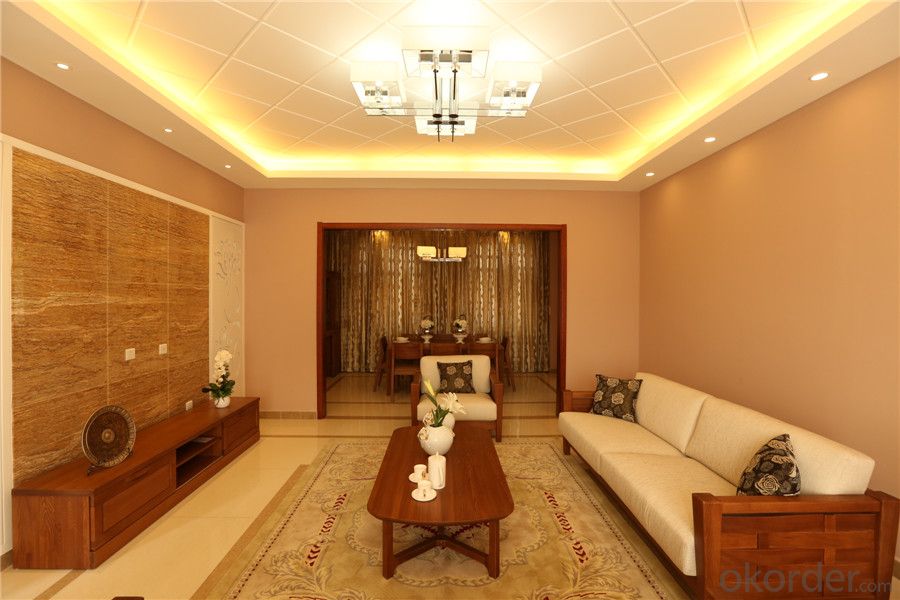

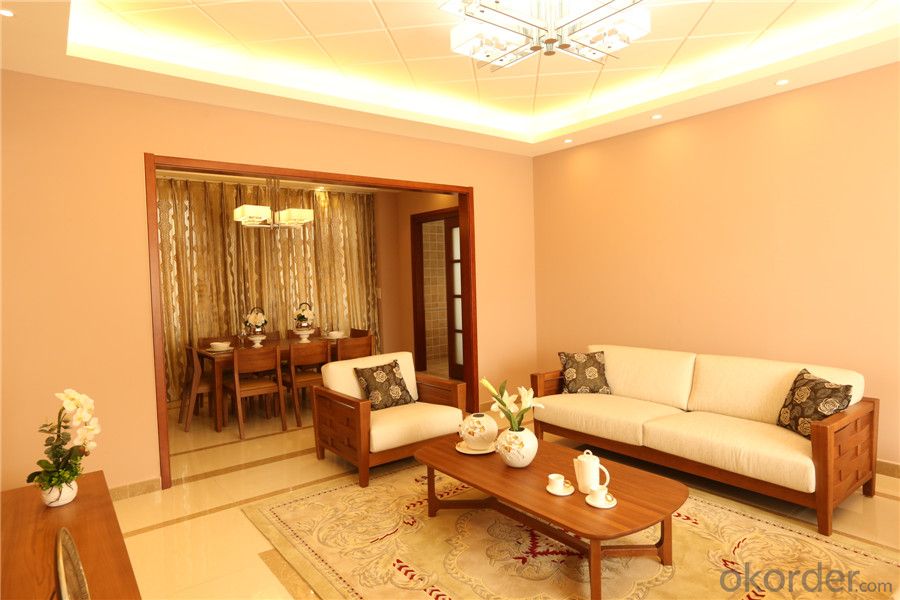
- Q:Are container houses suitable for minimalist living?
- Container houses are well-suited for minimalist living. Their simplicity and clean design make them a perfect match for the principles of minimalism. The limited space in these houses encourages individuals to prioritize and keep only what is essential. The smaller living space leaves no room for clutter, emphasizing quality over quantity. Moreover, container houses often feature open floor plans, creating a sense of spaciousness and allowing for flexible design options. The use of minimal materials in their construction further aligns them with minimalist living by reducing waste and unnecessary consumption. In conclusion, container houses offer an optimal living environment for those who embrace minimalism.
- Q:How do container houses handle plumbing and electrical installations?
- Container houses handle plumbing and electrical installations by incorporating standard systems into the design. Plumbing is usually installed by connecting to a municipal water supply or utilizing a well, with pipes routed through the walls or under the house. Similarly, electrical installations involve connecting to a power source, routing wires through the walls, and installing outlets and light fixtures. These installations require careful planning and may require modifications to accommodate the container structure, but they can be successfully integrated into container houses.
- Q:Can container houses be rented or leased?
- Yes, container houses can be rented or leased. Many individuals or companies offer container houses for rent or lease as an alternative housing option. Renting or leasing a container house can be a cost-effective solution for those who are looking for temporary or flexible accommodation. These houses can be customized according to the renter's needs and preferences and can be easily transported to different locations. Additionally, renting or leasing a container house allows individuals to experience the minimalist and sustainable lifestyle that comes with living in a container home without the commitment of purchasing one.
- Q:Are container houses suitable for retirement homes?
- Container houses can be suitable for retirement homes, as they offer several advantages such as affordability, durability, and flexibility in design. These homes can be customized to meet the specific needs of retirees, ensuring accessibility and comfort. Additionally, container houses are eco-friendly and can be easily modified to include necessary amenities for a comfortable and convenient retirement living.
- Q:What are the common sizes of container houses?
- The common sizes of container houses vary, but they typically range from 20 to 40 feet in length.
- Q:Are container houses suitable for individuals who enjoy outdoor living?
- Yes, container houses can be suitable for individuals who enjoy outdoor living. Container houses can be designed with large windows and open floor plans that allow for plenty of natural light and a seamless connection between indoor and outdoor spaces. Additionally, container houses can be easily customized and modified to include features such as outdoor decks, patios, or rooftop gardens, providing ample opportunities for outdoor living. With the right design, container houses can offer a unique blend of indoor comfort and outdoor enjoyment, making them a great option for individuals who love spending time outdoors.
- Q:Are container houses suitable for remote working?
- Yes, container houses can be suitable for remote working. Container houses offer several advantages for remote workers, including flexibility, affordability, and sustainability. Firstly, container houses are highly flexible and can be customized to suit the specific needs of remote workers. The interior can be designed to include a dedicated workspace with all the necessary amenities like a desk, chair, and storage for office supplies. Additionally, containers can be easily modified to incorporate windows and skylights, ensuring proper lighting and ventilation for a comfortable work environment. Secondly, container houses are often more affordable than traditional houses or office spaces. The cost of purchasing and converting a container into a home office is generally lower than building or renting a separate office space. This affordability makes them an attractive option for remote workers looking to reduce expenses and allocate their resources more efficiently. Lastly, container houses are known for their sustainability. They are typically made from recycled materials, reducing environmental impact compared to traditional construction methods. By choosing a container house for remote working, individuals can contribute to a more sustainable lifestyle and reduce their carbon footprint. However, it is important to consider some potential drawbacks. Container houses may have limited space, which could be a challenge for those requiring larger office setups or collaborative workspaces. Additionally, the insulation and noise reduction properties of containers may not be as effective as traditional buildings, which could impact concentration and productivity. In conclusion, container houses can be suitable for remote working due to their flexibility, affordability, and sustainability. While they may have some limitations, with proper customization and consideration of individual needs, container houses can provide an excellent remote working environment.
- Q:Can container houses be built with a rustic charm?
- Yes, container houses can definitely be built with a rustic charm. By using reclaimed materials, incorporating natural elements like wood and stone, and adding rustic finishes such as distressed paint or vintage fixtures, container houses can be designed to have a charming and cozy rustic aesthetic.
- Q:Can container houses be designed with hurricane-resistant features?
- Container houses have the capability to incorporate hurricane-resistant features in their design. While shipping containers are inherently sturdy and long-lasting, it is possible to take additional precautions to ensure their ability to withstand the forces of a hurricane. One crucial aspect of designing a container house that can withstand hurricanes is reinforcing the structure to resist strong winds. This can be achieved by adding extra steel beams or braces to strengthen the container walls, roof, and floor. By reinforcing the container, it becomes more equipped to handle the high wind pressures experienced during a hurricane. Securing the container house to its foundation is another important consideration. This can be accomplished by using robust anchor systems like concrete footings or helical piles. Properly anchoring the container house will prevent it from being lifted or moved by powerful winds, thereby minimizing the risk of structural damage. Furthermore, it is essential to design the container house with hurricane-resistant windows and doors. Impact-resistant windows and doors made from materials such as laminated glass or polycarbonate can withstand flying debris and pressure changes caused by hurricanes. These features ensure that the container house remains intact and provides a safe environment for its occupants during a storm. Additionally, integrating proper insulation and ventilation systems into the container house is crucial to prevent water infiltration during heavy rainfall associated with hurricanes. By implementing adequate waterproofing measures and efficient drainage systems, the risk of flooding or water damage can be mitigated. It is important to acknowledge that while container houses can be designed with hurricane-resistant features, no structure can be completely hurricane-proof. The severity of a hurricane and its impact on a container house will depend on various factors such as its location, the strength of the storm, and the quality of construction. However, incorporating hurricane-resistant design features significantly increases the likelihood of the container house withstanding the forces of a hurricane and safeguarding its occupants.
- Q:How do container houses compare to traditional houses in terms of energy efficiency?
- Container houses are often considered to be more energy-efficient than traditional houses. This is because containers are typically made of strong, durable materials such as steel that have a high level of insulation. This insulation helps to keep the interior temperature stable, reducing the need for heating or cooling systems and thereby saving energy. Moreover, container houses can incorporate sustainable technologies such as solar panels, rainwater harvesting systems, and energy-efficient appliances. These features further enhance their energy efficiency and minimize their environmental impact. In contrast, traditional houses may not have the same level of insulation, leading to heat loss during colder months and increased energy consumption for heating purposes. Additionally, traditional houses often have larger square footage, which means more energy is required to heat or cool the space. However, it is important to note that the energy efficiency of both container houses and traditional houses can vary greatly depending on factors such as design, construction quality, and the use of sustainable practices. Therefore, it is crucial to consider these aspects when comparing the energy efficiency of container houses to traditional houses.
1. Manufacturer Overview |
|
|---|---|
| Location | |
| Year Established | |
| Annual Output Value | |
| Main Markets | |
| Company Certifications | |
2. Manufacturer Certificates |
|
|---|---|
| a) Certification Name | |
| Range | |
| Reference | |
| Validity Period | |
3. Manufacturer Capability |
|
|---|---|
| a)Trade Capacity | |
| Nearest Port | |
| Export Percentage | |
| No.of Employees in Trade Department | |
| Language Spoken: | |
| b)Factory Information | |
| Factory Size: | |
| No. of Production Lines | |
| Contract Manufacturing | |
| Product Price Range | |
Send your message to us
Villa House Prefabricated Home Standard High Quality Prefab Home
- Loading Port:
- Shanghai
- Payment Terms:
- TT OR LC
- Min Order Qty:
- 50 m²
- Supply Capability:
- 10000 m²/month
OKorder Service Pledge
OKorder Financial Service
Similar products
New products
Hot products
Hot Searches
Related keywords
